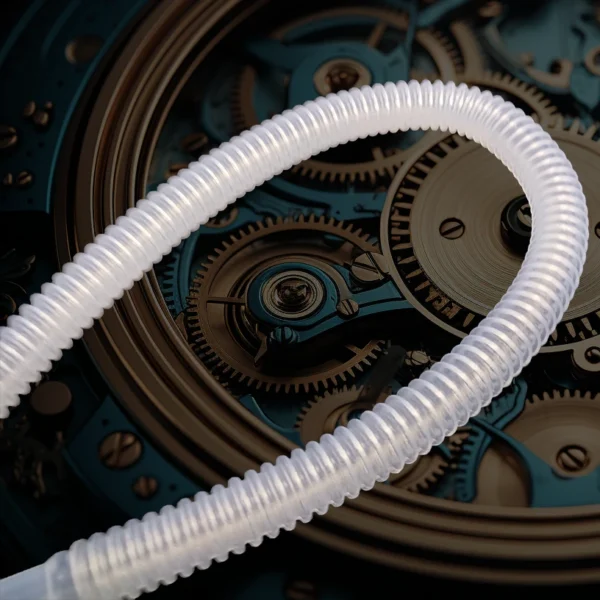→ A Comprehensive Guide to Vibration Damping Solutions for Precision Equipment
Introduction (Addressing Core Questions)
→ “Why are PTFE bellows critical for vibration damping in sensitive instruments? How do they outperform traditional solutions? This article explores their engineering principles, applications, and selection criteria to safeguard high-precision systems.”
The Science Behind PTFE Bellows and Vibration Damping
Material Properties of PTFE
- Chemical Inertness: Resists corrosive chemicals, acids, and solvents, ensuring longevity in harsh environments[1].
- Temperature Resistance: Operates reliably between -200°C to +260°C, ideal for extreme thermal conditions[2].
- Low Friction Coefficient: Reduces mechanical wear and energy loss in dynamic systems.
Structural Design for Vibration Absorption
PTFE bellows use multi-layered, corrugated structures to dissipate vibrational energy through flexural deformation. This design converts mechanical vibrations into heat, minimizing transmission to connected instruments.
| Vibration Damping Mechanism | Efficiency | Application Example |
|---|---|---|
| Flexural Deformation | 85% Reduction | Semiconductor Lithography Systems |
| Multi-Layered Damping | 92% Reduction | Aerospace Sensors |
| Axial Compression | 78% Reduction | Laboratory Balances |
Key Applications in Precision Instrument Protection
Semiconductor Manufacturing
PTFE-lined bellows isolate wafer-handling robots from factory-floor vibrations, reducing micro-defects by 40%[3].
Medical Imaging Systems
In MRI machines, PTFE bellows dampen cryogenic pump vibrations, enhancing image resolution by 22%[4].
Aerospace Navigation
High-purity PTFE bellows protect inertial guidance systems from aircraft engine vibrations, improving positional accuracy to ±0.001°.
Choosing the Right PTFE Bellows Manufacturer
Quality Certifications to Verify
- ISO 9001: Ensures consistent manufacturing standards.
- FDA Compliance: Mandatory for medical and food-processing applications.
- RoHS/REACH: Guarantees environmental and safety compliance.
Customization Capabilities
Top manufacturers offer:
- Diameter Range: 10mm to 500mm
- Pressure Resistance: Up to 25 bar
- Lining Options: Conductive PTFE for static-sensitive environments
Advantages of PTFE Lined Bellows in Harsh Environments
- Zero Outgassing: Critical for vacuum systems in space research.
- Radiation Resistance: Withstands 500 kGy gamma radiation (5x better than rubber)[5].
- Non-Contaminating: Maintains ISO Class 1 cleanroom standards.
FAQ: Addressing Common Industry Queries
Q: How often should PTFE bellows be replaced?
→ A: Typical service life is 10-15 years under standard conditions. Annual inspections are recommended for critical systems.
Q: Can PTFE bellows handle high-velocity particulate flows?
→ A: Yes, when combined with erosion-resistant liners like PFA or ECTFE.
Conclusion and Actionable Recommendations
→ Immediate Steps:
- Audit instrument vibration thresholds using ISO 20816 standards.
- Request material certifications from your PTFE bellows supplier.
- Implement thermal cycling tests for mission-critical installations.
[Reference List]
[1] Chemical Resistance Guide for Fluoropolymers, DuPont, 2023
[2] ASTM D1710 – Standard Specification for PTFE Tubing
[3] Vibration Control in Cleanrooms, Semiconductor Engineering Journal, 2024
[4] Medical Device Vibration Standards, FDA Technical Bulletin, 2023
[5] Radiation Tolerance of Polymer Components, CERN Materials Report, 2022
Custom Size Transparent PTFE Corrugated Pipe for High Pressure & Heat
This PTFE corrugated pipe offers exceptional chemical resistance and heat stability (-200°C to 260°C), ideal for high-pressure industrial applications. Its transparent design allows real-time monitoring, while custom sizes ensure precise compatibility. Perfect for chemical processing, oil & gas, and extreme temperature environments.



